Above: An excavator clears land at the Beals Preserve
Some call it The Brontosaurus. It’s an appropriate nickname. The machine helping to clear woodlands at the Beals Preserve can chew a tree down to the ground in a matter of about 60 seconds, leaving only a pile of wood chips. Trees as big as two feet in diameter are no match for its 21 whirring blades.
The excavator is chewing its way through about six acres of forest at the Beals Preserve. It’s part of an effort to create a shrubland habitat for at-risk species like the New England Cottontail and the American Woodcock. Woodcock nests have been found on the preserve in the past, and Southborough Open Land Foundation president Sally Watters said she hopes the work will encourage more to take up residence there.
Watters said another benefit of the work is that clearing the land gets rid of invasive species like buckthorn and bittersweet that grow in abundance at the preserve. “At points the bittersweet has been so thick it’s gotten tangled in the excavator,” Watters said.
The work is being funded by a $15K grant from the USDA’s Wildlife Habitat Incentive Program (WHIP). In addition to clearing the land, the grant will cover maintenance for the next three years, including treating the area to prevent the regrowth of invasive species.
Watters said that while most trees will be cut down, the area will not be exclusively grassland like the Breakneck Hill Conservation Area. Small plants and native shrubs like blueberry bushes will be allowed to grow. Aspen and cedar trees are also being preserved because they provide desireable habitat for birds like the woodcock.
The area being cleared lies between the Horse Ring trail on the south and east, the main trail on the west, and the Wachusett Aqueduct to the north. Several stone walls line the area, but those walls will not be disturbed. A line of trees will remain between the shrubland and the aqueduct.
No trails are planned through the cleared area at this point, but it will not be off-limits to human visitors, except potentially during sensitive mating and nesting periods.
Watters said that while some residents in the neighborhoods abutting the Beals Preserve have expressed concern, most have been supportive.
“I know people treasure this property. We do too,” Watters said. “We’re doing what we think will be best long term for all species.”
Check out some photos of the cutting work below. Click to enlarge.

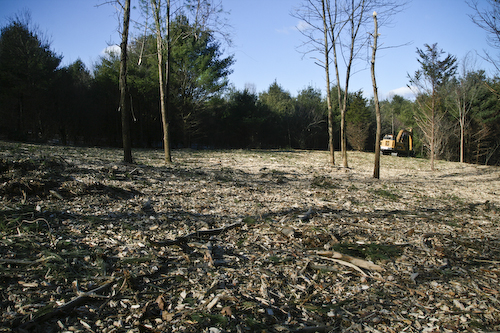
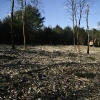
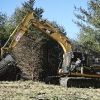
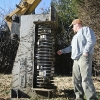
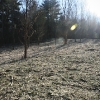
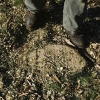
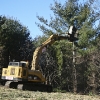
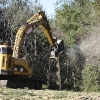
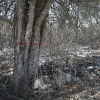

I read a lot about the Beals Preserve and it looks like a great place to take a walk – the problem is I have no idea where it is! I have looked on town maps and the SOLF web site but I can’t figure out what section of town it is in. Would love some information.
Michele,
Once the forestry work is done, two convenient access points are at the end of Red Gate Lane and the end of Hickory which is off Red Gate. Also, going down the lane opposite Chestnut Hill Rd – or heading West from the Channel dam on Deerfoot Rd. You walk on the path along the channel until you see signs for Beals Preserve.
Thanks Rose. I appreciate it!
What does “including treating the area to prevent the regrowth of invasive species” mean? I hope it doesn’t mean the use of herbicides. Birds and small animals like things like bittersweet as they provide winter food and many native plants do not last thru the winter.
There is now a link from the SOLF home page on the left side above the Metrowest Foundation logo. It takes you to a page with a description of various ways to access Beals Preserve. Rose’s information is accurate. The web site is undergoing some changes and the access information is a valuable addition. I would ask that people please pay attention to the signs asking you to stay off of Beals Preserve while the clearing is going on. As Susan’s pictures shown the machine cutting the trees is very powerful and throws debris quite a distance. We do not want anyone being injured. We hope the work will be done soon, and the closure signs will come down! Thank you for your cooperation.
Hi everyone out there reading this I’m Matt and I was the person operating the brushcutter. Our company name is New England Right of Way and Vegetation Management. You can see some of other work on our website New England Right of Way.com. But yes some people call my machine a brontosarus but I like to call it a T-REX because it is the top predator in the brush….LOL well thanks for reading